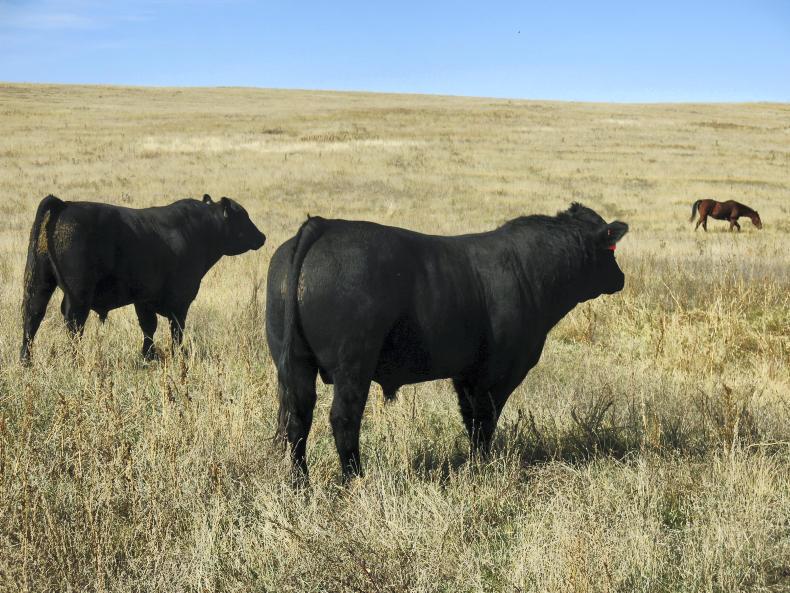
LOYALTY CODE:
The paper code cannot be redeemed when browsing in private/incognito mode. Please go to a normal browser window and enter the code there

LOYALTY CODE:
The paper code cannot be redeemed when browsing in private/incognito mode. Please go to a normal browser window and enter the code there
This content is copyright protected!
However, if you would like to share the information in this article, you may use the headline, summary and link below:
Title: Beef grading in the US: focusing on the consumer
Livestock specialist Ciarán Lenehan embarked on a beef tour of the US recently and was impressed with how farmers are paid for their product.
https://www.farmersjournal.ie/beef-grading-in-the-us-focusing-on-the-consumer-239962

ENTER YOUR LOYALTY CODE:
The reader loyalty code gives you full access to the site from when you enter it until the following Wednesday at 9pm. Find your unique code on the back page of Irish Country Living every week.

CODE ACCEPTED

You have full access to farmersjournal.ie on this browser until 9pm next Wednesday. Thank you for buying the paper and using the code.

CODE NOT VALID
Please try again or contact us.
For assistance, call 01 4199525
or email subs@farmersjournal.ie
Sign in

Incorrect details
Please try again or reset password
If would like to speak to a member of
our team, please call us on 01-4199525
Reset
password
Please enter your email address and we
will send you a link to reset your password

If would like to speak to a member of
our team, please call us on 01-4199525
Link sent to
your email
address
![]()
We have sent an email to your address.
Please click on the link in this email to reset
your password. If you can't find it in your inbox,
please check your spam folder. If you can't
find the email, please call us on 01-4199525.
![]()
Email address
not recognised
There is no subscription associated with this email
address. To read our subscriber-only content.
please subscribe or use the reader loyalty code.
If would like to speak to a member of
our team, please call us on 01-4199525
 This is a subscriber-only article
This is a subscriber-only article
Update Success !
Who represents the most important person in the beef production chain? The farmer? The processor? The retailer? All wrong; it is the consumer.
A satisfied consumer comes back for more – keeping things sustainable. The US beef grading system is built around this principle.
Eating experience
Marbling, or intramuscular fat, runs through the centre of lean muscle tissue. It is not to be confused with fat trim that’s chewy and unpleasant to eat. Instead, marbling is dissolvable fat that adds flavour to beef and leads to a melt-in-the-mouth texture. The photo below shows a well-marbled steak from an Angus heifer.

While it hasn’t significantly caught on in a health-conscious Europe, the American steak eater wants marbled meat so flavoursome that there isn’t a need to douse it in sauce. In fact, most authentic steakhouses serve their top cuts without any sauce.
Farmer rewards
While some finishers sell to processors on a liveweight basis, many sell carcase weight. Like in Ireland, they receive a base price – currently running at equivalent €3.55/kg. The carcase is then graded on two ribeye-based criteria and increments are added to, or taken away from, the base price per pound based on results.
Unlike in Ireland, where increments are fixed at 6c, American increments are dynamic and negotiable. While farmers are incentivised based on ‘Yield Grade’ (figure 1) which rewards terminal traits – an equivalent combination of our EUROP and fat class scales – they are also paid bonuses or penalised based on how marbled their beef is (Quality Grade).

Indeed, most steaks on retail shelves are labelled with their corresponding quality grades.
Given their propensity for fatness and marbling, purebred Angus or Angus crosses are the only show in town when it comes to producing prime cuts.
This is also the basis for our Angus bonus, though we don’t produce our cattle fat enough to feel the real benefits of marbling at eating time.
Watch: cross country cattle drive in South Dakota
Camera at the mart in Nebraska
SHARING OPTIONS: